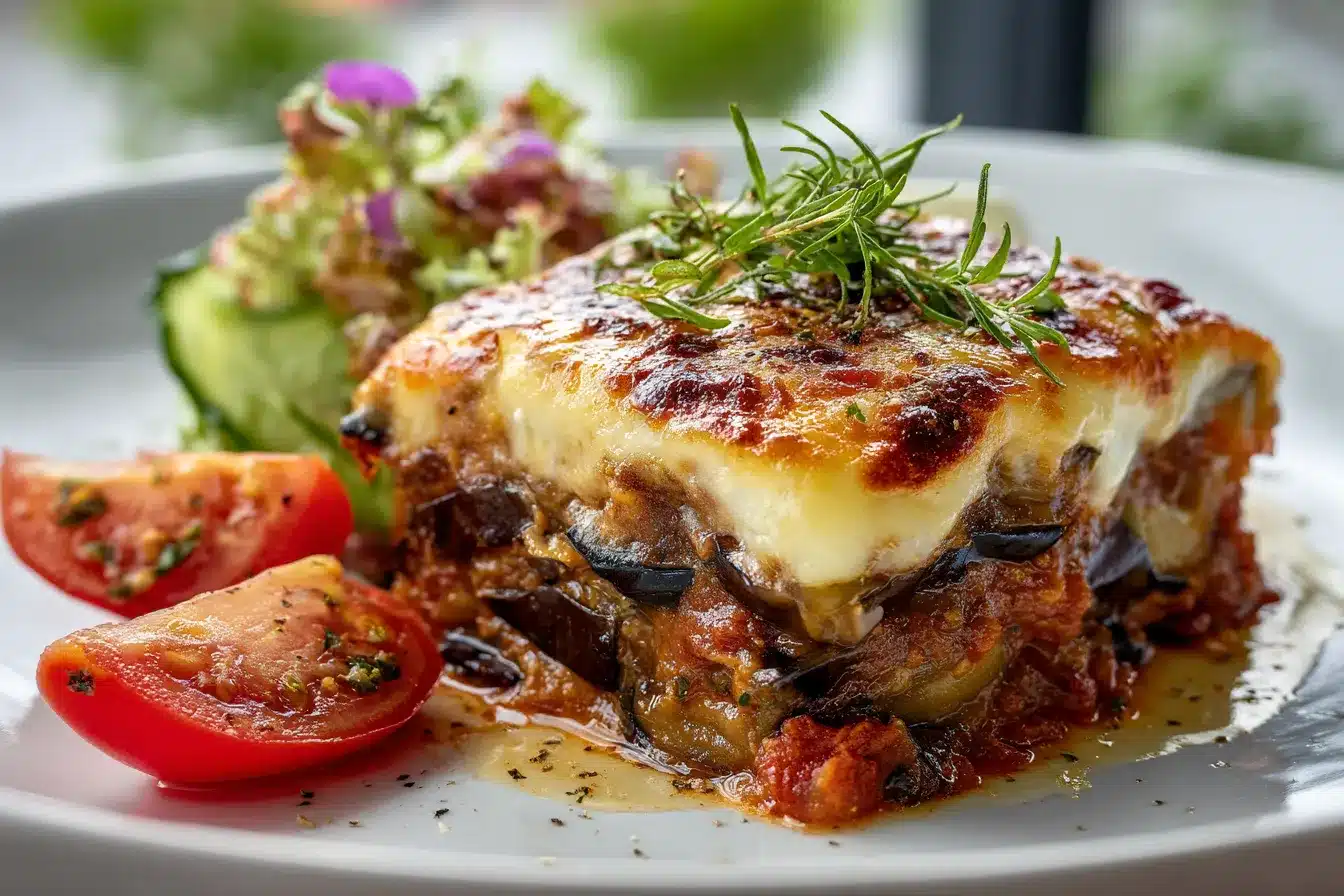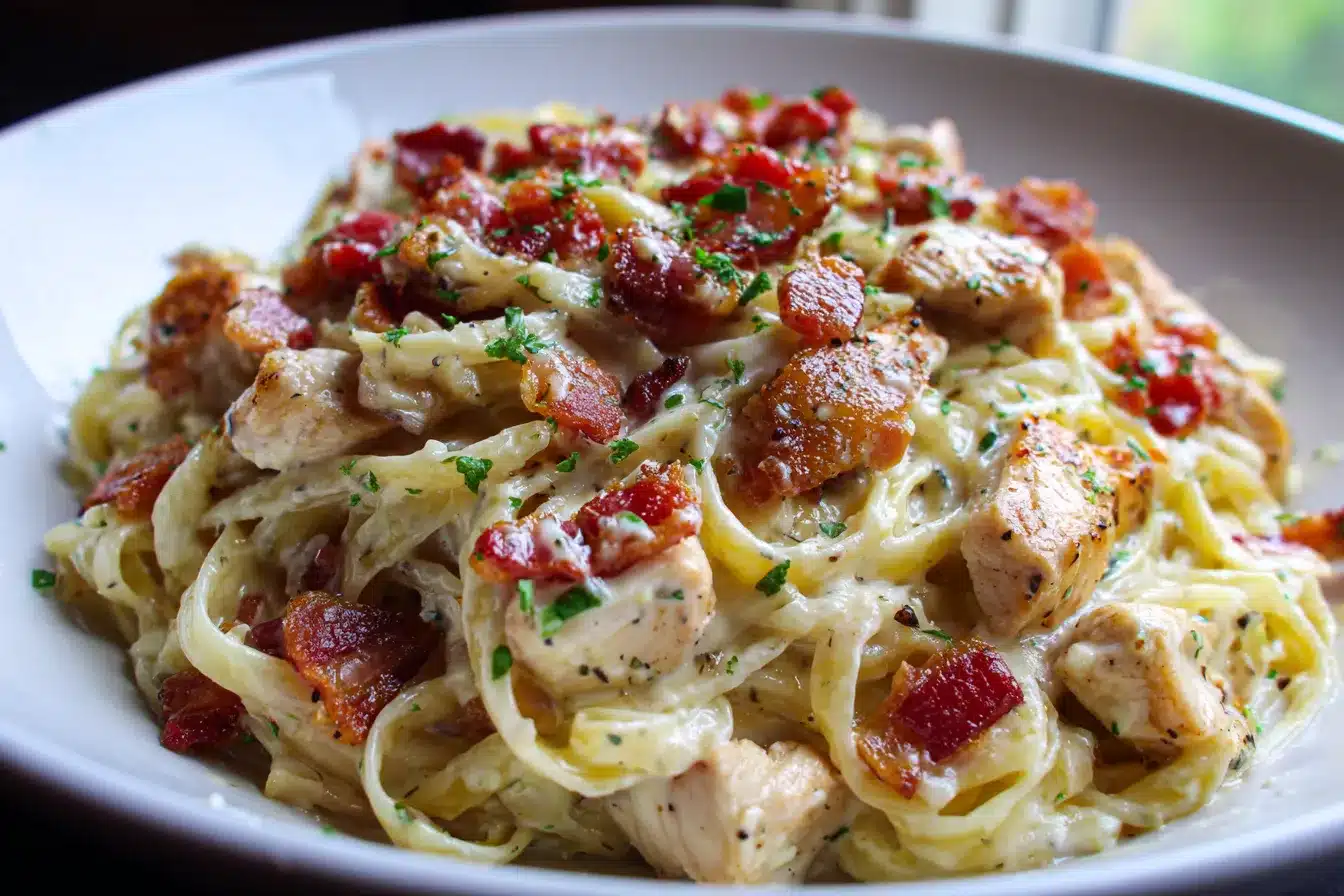Ramen noodle lasagna is not just a dish; it’s a culinary adventure that marries the comforting layers of traditional lasagna with the umami-rich flavors of ramen. This innovative fusion has captured the hearts of food enthusiasts worldwide, offering a unique twist on two beloved classics. In this section, we’ll explore what ramen noodle lasagna is and trace its intriguing origins.
What is Ramen Noodle Lasagna?
Ramen noodle lasagna is a creative culinary fusion that combines the comforting, layered structure of traditional Italian lasagna with the distinctive taste and texture of Asian ramen noodles. Instead of using standard pasta layers, this innovative dish utilizes cooked ramen noodles, layering them with various ingredients such as meats, vegetables, cheeses, and sauces, typically found in classic lasagna recipes.
The idea is to blend the savory, umami-rich flavors of ramen with the hearty, rich elements of lasagna, creating a unique and flavorful dish. It’s a versatile recipe that allows for numerous variations, catering to different tastes and preferences, whether you’re aiming for a meaty, vegetarian, or even vegan version. Ramen noodle lasagna is a testament to culinary creativity, offering a novel twist on two beloved dishes from different culinary worlds.
The Origin of This Unique Dish
The concept of ramen noodle lasagna emerged from the fusion cuisine trend, where chefs and home cooks alike experiment by combining elements from different culinary traditions. This dish is a product of such experimentation, blending the Italian love for layered casseroles with the Asian penchant for noodles.
Step-by-Step Ramen Noodle Lasagna recipe
Ingredients:
- 4 packets of instant ramen noodles (flavor packets discarded)
- 1 pound ground beef or your choice of protein
- 1 onion, chopped
- 2 cloves of garlic, minced
- 1 jar (24 ounces) of marinara sauce
- 15 ounces ricotta cheese
- 1 egg
- 2 cups shredded mozzarella cheese
- 1 cup grated Parmesan cheese
- Salt and pepper to taste
- Fresh basil or parsley for garnish (optional)
Instructions:
- Preheat the Oven: Set your oven to 375°F (190°C) to preheat while you prepare the ingredients.
- Prepare the Ramen: Cook the ramen noodles according to the package instructions, but without the flavor packet. Drain and set aside.
- Cook the Meat: In a large skillet, cook the ground beef over medium heat until it’s no longer pink. Add the chopped onion and minced garlic, cooking until the onion is translucent. Drain any excess fat.
- Combine Meat and Sauce: Stir in the marinara sauce with the cooked meat, bringing it to a simmer. Season with salt and pepper, then remove from heat.
- Cheese Mixture: In a bowl, mix the ricotta cheese, egg, a pinch of salt, and pepper until well combined.
- Assemble the Lasagna: In a baking dish, start by spreading a thin layer of the meat sauce. Then, layer the ramen noodles over the sauce. Spread a layer of the ricotta mixture over the noodles, followed by a sprinkle of mozzarella and Parmesan cheese. Repeat the layers until all ingredients are used, finishing with a layer of cheese on top.
- Bake: Cover the baking dish with aluminum foil and bake in the preheated oven for 25 minutes. Then, remove the foil and bake for an additional 10 minutes, or until the cheese is bubbly and golden brown.
- Cool and Serve: Let the lasagna cool for about 10 minutes before slicing. Garnish with fresh basil or parsley if desired, and serve warm.
Tips:
- Feel free to add vegetables like spinach or mushrooms to the meat layer for extra nutrition.
- For a spicier version, incorporate red pepper flakes or a spicy version of marinara sauce.
- If you prefer a crunchier top, broil the lasagna for a few minutes after baking.
Variations of ramen noodle lasagna
Embarking on the ramen noodle lasagna journey begins with understanding the essential ingredients and exploring the myriad of variations that can cater to every palate. Whether you’re a fan of the classic flavors or inclined towards more adventurous culinary experiments, there’s a version of ramen noodle lasagna for you.
Ramen noodle lasagna offers a canvas for a plethora of variations, allowing cooks to tailor the dish to their taste preferences or dietary requirements. Here are some creative twists on the traditional ramen noodle lasagna:
Nutritional Information
The nutritional information for ramen noodle lasagna can vary significantly based on the specific ingredients and portion sizes used. However, I can provide a general overview of the nutritional content based on common ingredients found in a typical ramen noodle lasagna recipe. Keep in mind that these values are approximate and should be adjusted based on your specific recipe and serving size.
Estimated Nutritional Information (per serving, based on 8 servings per recipe):
- Calories: 450-550 kcal
- Protein: 25-35 g
- Total Fat: 20-30 g
- Saturated Fat: 10-15 g
- Cholesterol: 80-120 mg
- Carbohydrates: 40-50 g
- Dietary Fiber: 2-4 g
- Sugars: 5-10 g
- Sodium: 800-1200 mg
Breakdown:
- Calories: The combination of noodles, cheese, and meat contributes to the calorie count. Using leaner meats or less cheese can reduce calories.
- Protein: This dish is a good source of protein, primarily from the meat and cheese. Plant-based proteins can also be used for vegetarian versions.
- Fats: Cheeses and meats contribute to the fat content, particularly saturated fats. Opting for reduced-fat cheeses or lean meats can lower fat content.
- Carbohydrates: Ramen noodles are the primary source of carbs. Whole grain or vegetable-based noodles can offer a healthier alternative with more fiber.
- Sodium: Ramen noodles and store-bought marinara sauce can be high in sodium. To reduce sodium, choose low-sodium sauces or make your own, and consider using fresh noodles or ones with lower sodium content.
- Vitamins and Minerals: This dish can provide iron (from the meat), calcium (from the cheese), and various vitamins depending on the vegetables included in the sauce or layers.
Tips for a Healthier Version:
- Use whole grain or vegetable-based noodles: These can provide more fiber and nutrients than traditional ramen noodles.
- Opt for lean meats: Choose lean ground beef, turkey, or chicken to reduce saturated fat.
- Increase vegetables: Add layers of spinach, zucchini, or mushrooms to increase fiber and nutrients.
- Choose low-fat cheeses: Reduce saturated fat by selecting low-fat ricotta and mozzarella.
- Make homemade sauce: Control the sodium and sugar content by preparing your marinara sauce.
When preparing ramen noodle lasagna, consider these nutritional aspects to make choices that align with your dietary goals or needs.
Health Benefits of Ramen Noodle Lasagna
Here are some potential health benefits of ramen noodle lasagna, along with tips for boosting its nutritional profile:
- Protein Source: Ramen noodle lasagna can be a good source of protein, especially when made with meat, cheese, and possibly an egg in the cheese mixture. Protein is essential for building and repairing tissues, supporting immune function, and serving as a building block for enzymes and hormones.
- Calcium and Dairy Intake: The cheese in lasagna provides calcium, which is vital for bone health, muscle function, and nerve signaling. Choosing ricotta, mozzarella, and Parmesan adds to the dish’s calcium content.
- Customizable Vegetable Content: By incorporating vegetables into the layers or the sauce, you can boost the vitamin, mineral, and fiber content of the dish. Vegetables like spinach, mushrooms, zucchini, or bell peppers can add antioxidants, vitamins, and minerals.
- Energy Providing: Given its carbohydrate content from the noodles and potentially the sauce, ramen noodle lasagna can be a good energy source. Carbohydrates are the body’s primary energy source, especially for the brain and muscles during exercise.
- Iron Source: If you’re using red meat, ramen noodle lasagna can be a source of heme iron, which is more easily absorbed by the body than non-heme iron found in plant foods. Iron is crucial for forming red blood cells and transporting oxygen throughout the body.
Tips for Enhancing the Health Benefits:
- Whole Grain or Veggie Noodles: Opt for whole grain ramen or vegetable-infused noodles to increase fiber and nutrient intake.
- Lean Proteins: Use lean meats or plant-based proteins to reduce saturated fat while maintaining protein content.
- Add Vegetables: Boost the dish’s fiber, vitamin, and mineral content by adding layers of vegetables or incorporating them into the sauce.
- Low-Fat Cheese Options: Choose low-fat cheese options to reduce saturated fat intake without sacrificing calcium and protein.
- Control Portion Sizes: Lasagna can be calorie-dense, so be mindful of portion sizes to avoid overeating.
While ramen noodle lasagna can be part of a balanced diet, it’s essential to consider the overall nutritional balance of your meals throughout the day. Making health-conscious ingredient choices can turn this comfort food into a more nutritious meal that still satisfies your taste buds.
Pairing with Side Dishes
Here are some side dishes that complement ramen noodle lasagna, catering to a range of tastes and dietary preferences:
- Garden Salad: A fresh garden salad with a variety of vegetables can add a crisp, refreshing contrast to the rich lasagna. Use a light vinaigrette to dress the salad, which can help cut through the dish’s richness.
- Steamed Vegetables: Simple steamed vegetables like broccoli, carrots, or green beans provide a healthy, fiber-rich addition to the meal. Season them lightly to complement the lasagna’s flavors without overpowering them.
- Garlic Bread: Garlic bread is a classic accompaniment to pasta dishes and can work well with ramen noodle lasagna. Choose a whole-grain bread for a healthier option and use garlic and herbs for flavoring.
When choosing side dishes, consider the balance of flavors and textures, as well as the nutritional balance, to create a well-rounded and enjoyable meal experience alongside your ramen noodle lasagna.
Elevate your ramen noodle lasagna with a Garlic Parmesan Sauce: A Culinary Delight. This rich and flavorful sauce adds a creamy texture and a burst of flavor, making your lasagna even more irresistible.
Looking for the perfect side dish to complement your lasagna? Try these Carrot Fries: A Delicious Alternative to Potato Fries. Their sweet and savory taste, along with a delightful crunch, makes them an excellent counterpart to the savory lasagna.
FAQ about the ramen noodle lasagna
- Can I make ramen noodle lasagna ahead of time? Yes, you can prepare ramen noodle lasagna ahead of time. Assemble the lasagna as per the recipe and cover it tightly with plastic wrap or aluminum foil before refrigerating.
- Are there gluten-free options for ramen noodle lasagna? Yes, there are gluten-free ramen noodles available in the market that you can use as a substitute for regular ramen noodles. Ensure that all other ingredients, such as sauces and seasonings, are gluten-free to make the entire dish safe for those with gluten sensitivities.
- How can I store and reheat leftover ramen noodle lasagna? Store leftover ramen noodle lasagna in an airtight container in the refrigerator for up to 3-4 days. To reheat, place a portion in the oven at 350°F (175°C) until it’s heated through, or warm it in the microwave, covering it with a microwave-safe lid or wrap to prevent it from drying out.
- Is ramen noodle lasagna suitable for freezing? Yes, you can freeze ramen noodle lasagna. It’s best to freeze it unassembled or fully baked. If freezing unassembled, layer the ingredients in a freezer-safe dish and cover tightly. If freezing a baked lasagna, let it cool completely before covering it tightly and placing it in the freezer. It can be frozen for up to 2-3 months. Thaw overnight in the refrigerator before baking or reheating.
- Can I make a vegan version of ramen noodle lasagna? Yes, to make a vegan version, use plant-based ramen noodles, a vegan protein source like lentils or tofu, and substitute the cheeses with vegan alternatives. Also, ensure that the marinara sauce and other ingredients are vegan-friendly.




